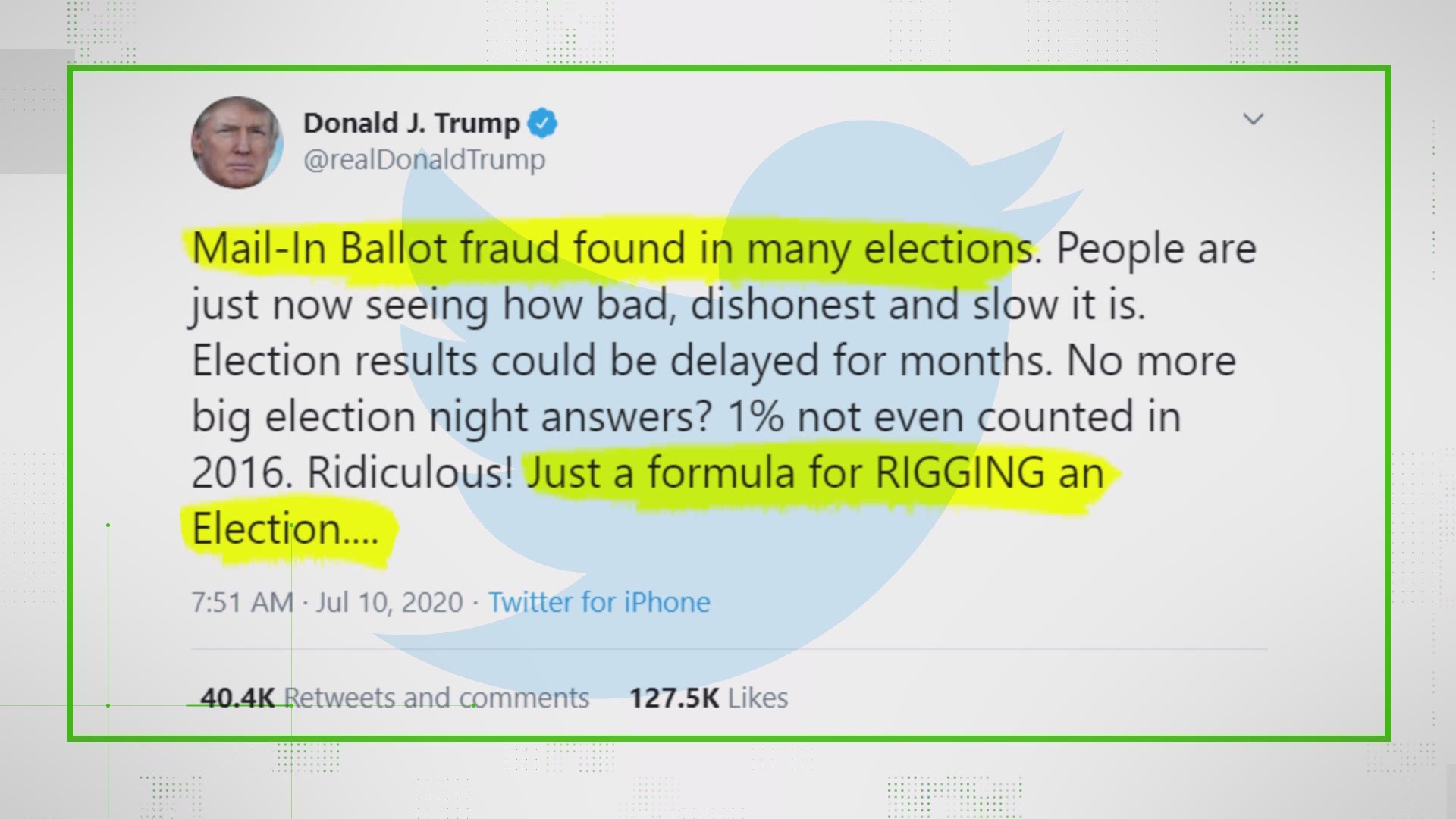As the nation approaches Election Day, some experts and pundits have suggested that leads and margins will swing wildly from when they are first reported after the polls close, later that night, and possibly even days after Nov. 3.
They say this has to do with the high volume of early voters in this year's election and how there's expected to be partisan differences between voting early rather than on Election Day.
One political reporter even referred to the possibility of a "blue mirage" in some states and a "red mirage" in others coming with the first wave of results after polls close.
What does all of this mean?
THE QUESTION
Could there be wild swings of results in states on election night and the days after? Why?
THE ANSWER
It's possible. Currently, numbers suggest that there may be a large partisan gap in who is voting early and who will vote on Election Day. Therefore, a state's first results could overrepresent votes for one candidate over another based on when the state begins counting early ballots.
WHAT WE FOUND
We don't know yet for whom early voters are casting their ballots. Not every state processes and tallies their early votes before Election Day. Those that do have laws against releasing early voting results before polls close.
However, some states do release demographic information on early voters, including their registered party. A voter doesn't have to pick their party's candidate, but they'll be more likely to vote for their party than others.
The United States Election Project is tracking party registration of early voters in states which make that information public. They list 20 states as the source of their data.
Nearly half of all early voters in those 20 states are registered Democrats, according to the U.S. Election Project. Almost 30% of early voters are Republicans. A little more than 20% have no party affiliation. And if you break it down further by returned mail-in ballots, registered Democrats are outvoting Republicans by a 2-to-1 margin.
That's a pretty significant imbalance in party registration among early voters. It suggests some merit to predictions that early voting will favor Joe Biden while Election Day voting will favor President Donald Trump, especially given the record turnout in early voting this year.
This matters because the first results released by states after the polls close are unlikely to include balanced proportions of early votes and Election Day votes counted. To put it another way, the mailed-in ballots and early votes may not be included in the first batch of day-of election totals.
The National Conference of State Legislatures lists when each state begins processing their early mail-in votes and when they start tallying them. Processing a mail-in vote works differently in each state, but it almost always includes verifying the voter's identity. The process can be time consuming.
Here are two examples of how states could reveal early voting and mail-in results at different rates after polls close.
North Carolina is a state where mail-in ballots and early votes are tallied before Election Day. It's likely that the first results released will be mostly comprised of early votes, which could be made up of more registered Democrats.
Pennsylvania, on the other hand, won't process mail-in ballots until Election Day itself. That means the earliest results that will be released will come from people who voted on Election Day itself, which is likely to be made up of more registered Republicans. Pennsylvania, and states like it, may be counting their mail-in ballots for days after Nov. 3.
There's no guarantee this is how Election Day will go down. Early votes and day-of votes may be counted at similar rates across the United States and avoid wild swings in the margins between the candidates. But it's essential to be prepared for the possibility that the way votes are counted may affect who leads each state early and who leads them late. And it's equally important to understand why that may happen.

